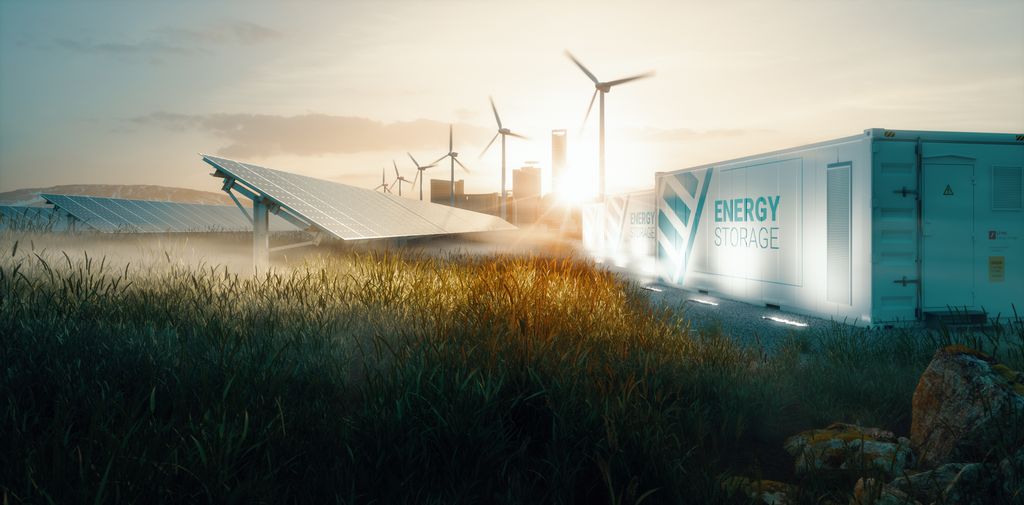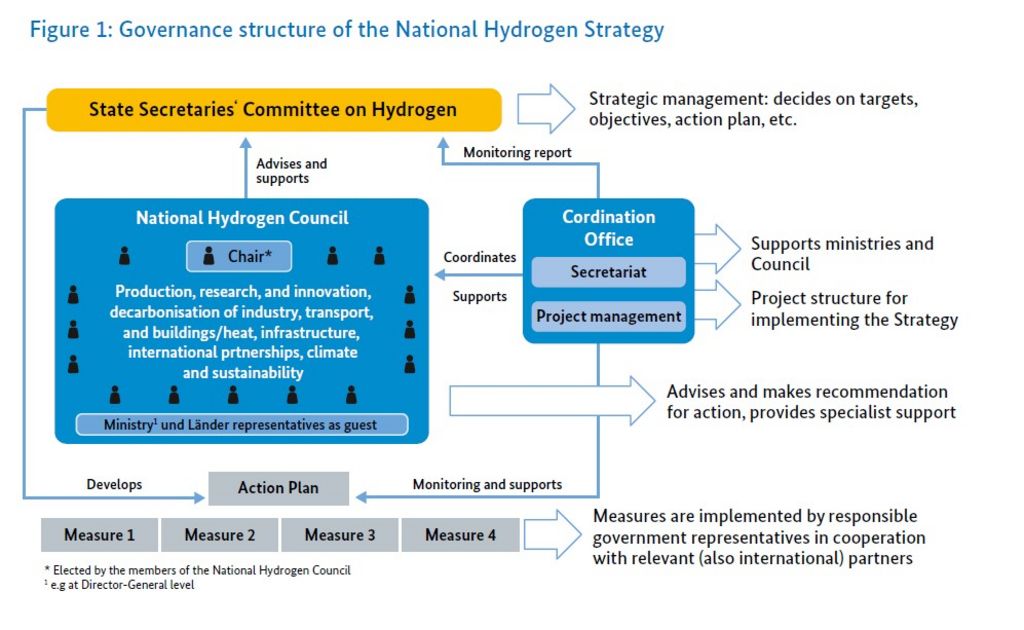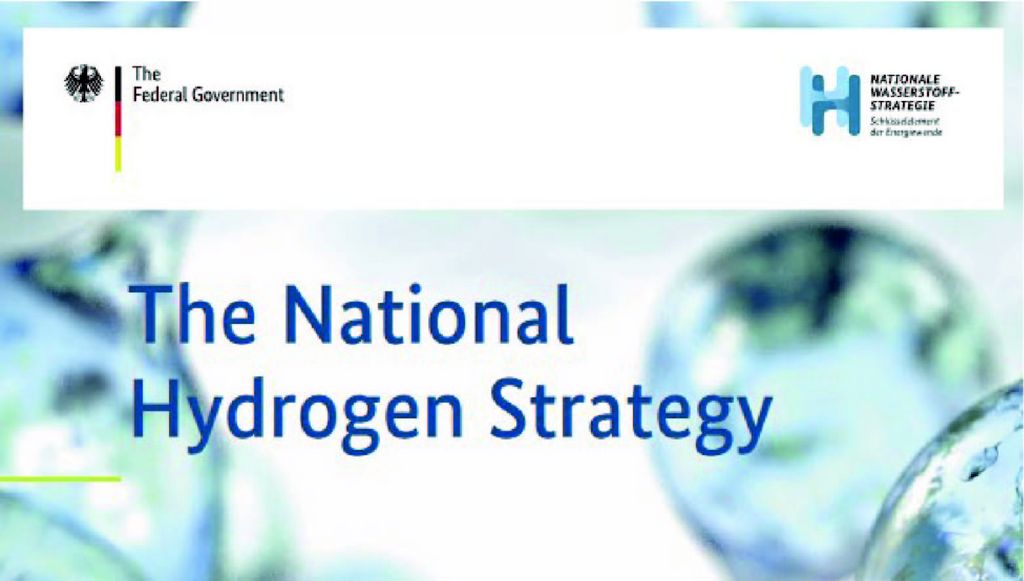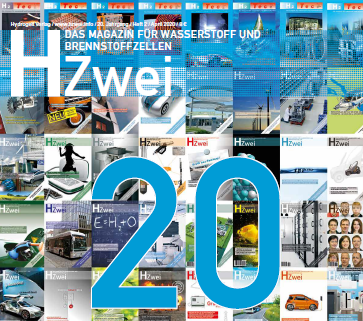On 10 June 2020, the Federal Cabinet approved a National Hydrogen Strategy for Germany. The adoption of the final draft now paves the way for 38 domestic measures which will also ensure that Germany plays a pioneering role in the development and export of hydrogen technologies internationally.
'We need to lay the groundwork today to make sure that Germany becomes the global leader on hydrogen technology,' said Federal Minister for Economic Affairs and Energy Mr Peter Altmaier in the run-up to the Strategy's adoption.
On account of its many possible uses, hydrogen based on renewable energy sources is considered a key element in advancing the energy transition. Electricity from renewable sources coupled with greater energy efficiency will continue to be the two central pillars of the energy transition going forward. Now that Germany has nearly finished phasing out nuclear energy and has made plans to phase out coal-fired power, it needs to find additional ways to advance its energy transition. As a highly industrialised country, Germany relies on gaseous and liquid energy sources as an important part of its energy system. These sources of energy will remain indispensable in a number of areas of industry and transport in the long term. However, given the tendency towards more ambitious climate targets, Germany needs environmentally friendly, long-term alternatives to fossil fuels such as coal, oil and gas in order to make the energy transition a success. It must therefore start by exploiting the potential for generating a direct supply of electricity from renewables and bolstering energy efficiency. In certain fields, however, this potential is limited.
By using hydrogen produced in a climate-friendly way, areas of industry that are reliant on the use of liquid or gaseous energy carriers can reduce their carbon emissions considerably. Hydrogen can be utilised, for example, as a feedstock in the chemical and steel industries or as a fuel in fuel cells. It can be put to beneficial use whenever electricity cannot be generated from renewable sources directly. The production of 'green' hydrogen from renewable electricity and water (via electrolysis), makes it possible to store and transport renewable energy.
38 measures that secure Germany's role as a global pioneer
Through its National Hydrogen Strategy, Germany is pursuing a number of different goals. Firstly, hydrogen technologies and zero-carbon energy carriers are to be made key elements of the energy transition. This is to ensure that areas of industry that cannot be decarbonised in any other way are able to reduce their greenhouse gas emissions and break their dependence on fossil fuels. The Strategy sets out Germany's plans to develop domestic markets for the production and use of hydrogen in order to ramp up the market. To do this, it envisages a suitable mix of investment support, relief on operating costs, energy policy conditions and carbon pricing. According to the strategy, 'Germany can harness potential along the entire value-added chain'. Here, the focus is on areas that are already operating on the margins of economic viability or which cannot otherwise cease to use fossil fuels (or 'decarbonise') based on the current state of the art of technology. These include industrial and transport sectors such as aviation, shipping and long-distance haulage.
The measures set out in the Strategy are designed to reduce the costs of developing and using hydrogen technologies so that global markets for hydrogen can be created.
The National Hydrogen Strategy can thus also serve to strengthen the competitiveness of German companies. Funding is envisaged for research, development and technology exports. After all, developing hydrogen technologies will not only help mitigate climate change, but also create many jobs and a valuable global market. In the future, hydrogen and its synthetic derivatives will play an important role worldwide. For this reason, Germany wants to work together with other EU Member States and international partners to shape a global hydrogen market.
Extensive funding for the use of hydrogen
German companies have long been very innovative and successful in the field of hydrogen, for example in electrolysis (which can be used to produce zero-carbon hydrogen) and in the development and production of fuel cells. Some 445 million euros in funding is to be made available up to 2024 for the use of hydrogen in industry. This is in addition to the nine billion euros that has just been approved by the Coalition Committee as part of a comprehensive economic stimulus package. Of this, two billion euros has been allocated to hydrogen in the 'global arena'. The remaining seven billion is to be used to strengthen the entire hydrogen value chain. In the field of research and development, a total of 100 million euros per year will be made available up to 2022 for the 'regulatory sandboxes for the energy transition', many of which will conduct research on hydrogen technologies. The Federal Ministry for Economic Affairs and Energy’s 2019 call for ideas for regulatory sandboxes for the energy transition was also primarily dedicated to hydrogen technologies. In addition, further applied research projects, such as the Metha-Cycle project, are to be expanded. In this particular project, a research team is currently undertaking practical tests on a new system for handling green hydrogen.
Alongside R&D on hydrogen use, one of the most important goals set out in Germany's National Hydrogen Strategy is to develop and secure the national supply of zero-carbon hydrogen. This is because producing green hydrogen is still very expensive and can only be done on a small scale. There is currently not enough infrastructure in place to store large amounts of liquefied hydrogen over long periods of time, to transport it over long distances, or to distribute it. So for the time being, Germany will have to cover a large part of its demand for zero-carbon and carbon-neutral hydrogen through imports. (To find out about the differences in production, please click here)
Five (now: 10) gigawatts of electrolysis capacity for green hydrogen by 2030
By 2030, it is expected that the scale of Germany's hydrogen demand will equate to around 90 to 110 terrawatt hours (TWh). In order to promote the development of a strong domestic market, Germany plans to build its first green hydrogen generation plants with a total capacity of up to ten gigawatts (GW) by 2030, including construction of the offshore and onshore infrastructure needed. This ambitious target corresponds to an additional electricity demand from renewables of 20 terawatt hours (TWh).
In order to cover the remaining demand, Germany will need reliable production and transport partners as well as developed cooperation and import structures, especially in the EU. Having these partners and structures in place will also provide an opportunity for expanding the European internal energy market and cooperating with developing countries that have high levels of sunshine and wind (which have great potential in the field of renewable energy), as described in the National Hydrogen Strategy. Germany could import from these countries the valuable green hydrogen it needs in order to increase its own production. Its domestic gas infrastructure will also have to be adapted to handle hydrogen – a further issue that is also taken up in the National Hydrogen Strategy.
Germany's Gas 2030 Dialogue Process has been exploring the role of gaseous energy sources in the energy transition since the end of 2018. Initial conclusions of the Process were presented by then Federal Economic Affairs Minister, Mr Peter Altmaier, in October 2019.









